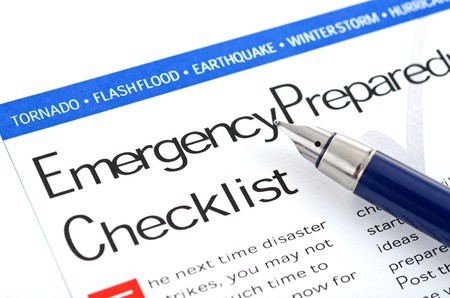Is your Property Prepared for a Tornado?
Spring hardly came in like a lion as far as tornadoes go. Until damaging twisters hit Oklahoma and Arkansas in late March, one of the historically heaviest months for spawning Tornadoes was meek as a lamb. None had developed in the first three weeks, and only four warnings were issued nationwide.

However, the season is far from done. April and May are prime times when twisters turn sunny spring days into rolling balls of destruction in communities across the country. No matter the current weather pattern, being aware and alert of changing skies is essential.
For apartments where high concentrations of people are gathered, tornado preparedness becomes particularly meaningful. Residents may only have minutes to find shelter before a tornado hits.
According to ready.gov, people should go to a pre-designated area such as a safe room, basement, storm cellar or the lowest building level when tornadoes threaten. If there is no basement, the center of a small interior room like a closet or hallway on the lowest level will work, especially for occupants of a high-rise apartment.
The idea is to put as many walls as possible between you and the outside. Always stay away from corners, windows, doors, and outside walls. Also, get under a sturdy table and use your arms to protect your head and neck.
Tornadoes shouldn’t be taken lightly. They can spin up to 300 mph and leave a path of destruction in excess of a mile wide and 50 miles long. Each year, they cause roughly $400 million in damages.
A number of websites, including the National Weather Service and the American Red Cross, offer useful tips on tornado preparedness. These are an excellent source of information for apartment managers to help educate residents and staff on what to do in the event of a natural disaster. Here are a few of the basics:
Know the difference between watches and warnings
Watch: Tornadoes are possible in and near the watch area. Review and discuss your emergency plans, and check supplies and your safe room. Be ready to act quickly if a warning is issued or you suspect a tornado is approaching.
Warning: A tornado has been sighted or indicated by weather radar. Tornado warnings indicate imminent danger to life and property. Go immediately underground to a basement, storm cellar or an interior room (closet, hallway or bathroom).
Watch for tornado danger signs
Ominous skies are an indication that a severe weather event is about to occur. Typically, a tornado emerges from a thunderstorm as a rotating funnel and extends to the ground. Watch for dark, green clouds, wall clouds, flying debris, large hail, funnel clouds or visible rotation and a roaring noise.
Stay informed about weather conditions
During any storm, listen to local news or a NOAA Weather Radio to stay informed about tornado watches and warnings. Also, tune into local weather channels or internet weather sites to see the latest radar activity.
Know your community’s warning system
Communities have different ways of warning residents about tornadoes, with many having sirens intended for outdoor warning purposes.
Designate a safe area within the community
Pick a safe room or area where residents can go during a tornado. This should be a basement, storm cellar or an interior room on the lowest floor with no windows. Consider having the safe room reinforced. Plans for reinforcing an interior room to provide better protection can be found on the FEMA web site.
Practice, practice, practice tornado drills
Practice periodic tornado drills so that everyone knows what to do if a tornado is approaching. Just like in the event of a fire, residents should be prepared to evacuate their apartments in an orderly fashion.
Prepare the outside of the property for a tornado
Prepare for high winds by removing diseased and damaged limbs from trees. Move or secure lawn furniture, trash cans, hanging plants or anything else that can be picked up by the wind and become a projectile.
Prepare and maintain an emergency survival kit
Make an emergency safety kit and periodically check on it to make sure it’s ready to go in the event of a disaster. The American Red Cross lists a number of essential items in its survival kit, including having a flashlight, battery-powered radio, a first-aid kit, multi-purpose tool, cell phone with charger and non-perishable food and water.
The first step to surviving a tornado is adequately preparing your staff and residents.
Source: PMI















 Accessibility
Accessibility